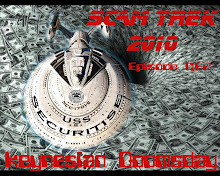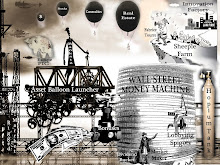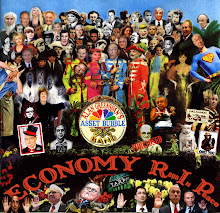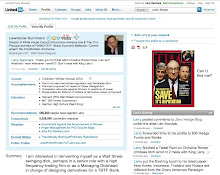RISK FACTORS FOR THE TARP PROSPECTUS
The following risk factors apply to the Untied States Troubled Asset Recovery Plan (TARP):
Investment Risk: There can be little or no assurance that TARP will achieve its investment
objectives. In fact it is a long shot on global confidence. The value of TARP and the income therefrom will
rise or fall, in lock step with the capital value of the toxic subprime securities in which TARP invests. Due
to the exponential overhang of related derivative instruments such as CDSs, the value
of these assets can be expected to continue to spiral downward into the the vortex.
Currency Risk: The NAV per TARP Share will be denominated in USD and the TARP
investments will be acquired directly or indirectly in the same currency. One of the
collateral effects of the TARP financing plan is the anticipated downward spiral of the USD.
TARP may, in exceptional circumstances, minimize the exposure to currency fluctuation
risks by the use of hedging and other sophisticated techniques and instruments. Nevertheless,
it is expected that additional funds will have to be printed.
Regulatory Risks and Accounting Standards Disclosure are less
stringent in the US asset backed securities markets than they are in certain undeveloped non-OECD countries.
Consequently, there is less publicly available information on the issuers of the subprime assets than is
published by or about other legitimate businesses.
Political Risks: The performance of TRAP will certainly be affected by changes in economic and
market conditions, a potential mega catastrophe such as an unexpected McCain win, an ensuing Palin Presidency,
continuous flip flopping in congressional policies, the whimsical imposition of restrictions on short selling and
other legitimate trading strategies and continued weak regulatory oversight by the SEC under Chairman Cox.
Credit and Settlement Risk: TARP will be exposed to credit default risk on parties with whom
it trades and will also bear the risk of settlement default. We have absolutely no clue
how much this could be. Counterparties such as AIG, Goldman Sachs and Morgan Stanley, who were previously
thought to be the gold standard, have become a virtual pinata of toxic financial risk and peril.
Risks of Debt Securities: The prices of debt securities purchased by TARP will fluctuate in response to perceptions
of the respective issuers’ creditworthiness and also tend to vary inversely with market interest rates.
Due to the sleazy nature of the issuer's of subprime securities, you should already know what to expect.
Performance Fees: Where incentive fees are payable by TARP these will be based
on net realised and net unrealised gains and losses at the end of each calculation period.
As a result, obscene incentive fees may be paid on unrealised gains which will in all probability
subsequently never be realised.
Risks associated with Financial Derivative Instruments: While the prudent use of
financial derivative instruments (“FDI”) is said to be beneficial, FDIs actually involve risks
different from, and in most cases greater than, the risks to be hedged. Moreover, FDI do
not perfectly or even highly correlate or track the
value of the securities, rates or indices they are designed to track. Consequently,
TARP's use of derivative techniques, as is usually the case, can never be an effective means of, and
in fact is more likely to be counter-productive to, TARP's investment objective.
Counterparties: The counterparties in TARP's anticipated investment activities
are a wily and scheming lot. Although every effort will be made to take appropriate
countermeasures, no assurance can be given that snake oil selling financial hucksters
will not find new creative methods and techniques for pillaging the TARP assets. In
fact you can bet your sweet @$$ they will.
A more detailed description of the risk factors that apply to the Fund is set out in the TARP
Prospectus.
Sunday, September 28, 2008
Subscribe to:
Post Comments (Atom)




































.jpg)












No comments:
Post a Comment